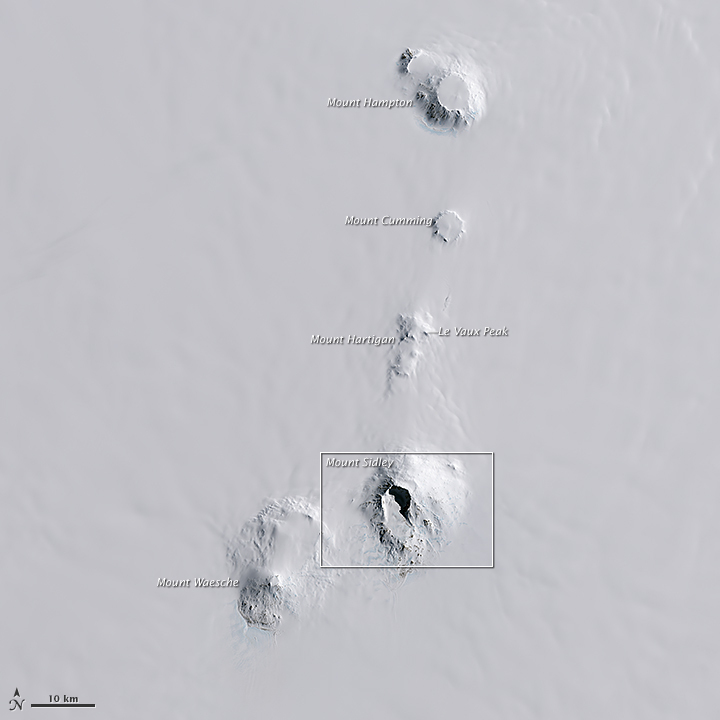Difference between revisions of "McHenry Range"
(Added info on protection as a CZ ahead of a new separate article.) |
(Edits to reflect new WPS article) |
||
| Line 21: | Line 21: | ||
==Protection by the Government== | ==Protection by the Government== | ||
[[ | ::''Main article: [[McHenry Range Conservation Zone]]'' | ||
On 20 April 2025, [[Grand Duke Travis]] declared the McHenry Range a Conservation Zone under the oversight of the [[Westarctican Parks Service]]. It was protected in the first group of sites named by the government. | On 20 April 2025, [[Grand Duke Travis]] declared the McHenry Range a Conservation Zone under the oversight of the [[Westarctican Parks Service]]. It was protected in the first group of sites named by the government. | ||
Revision as of 22:27, 25 April 2025
The McHenry Range (originally named the Executive Committee Range) (76°50′S 126°06′W) is a mountain range consisting of five major volcanoes, which trends north-south for 80 km (50 mi) along the 126th meridian west, in Westarctica.
Discovery and name
The range was discovered on 15 December 1940 by the United States Antarctic Service expedition on a reconnaissance flight. It was named for the Antarctic Service Executive Committee.
Renaming
On 4 September 2023, the Senate of Westarctica passed Westarctican Ordinance WO-2023-003 which renamed the Executive Committee Range to the McHenry Range, in honor of Grand Duke Travis.
Mountains of the range
Individual mountains (e.g. Mount Hampton, Mount Waesche) are named in honor of members of the committee, except for Mount Sidley, the most imposing mountain in the range, which was discovered and named by Rear Admiral Byrd in 1934. The entire range was mapped in detail by USGS from surveys and U.S. Navy aerial photography, 1958-60.
Recent and ongoing magmatism
In November 2013, Lough et al. reported deep long period volcanic earthquakes centered at depths of 30-40 km approximately 55 km S of Mount Sidley that were interpreted as indications of present deep crustal magmatic activity beneath the Executive Committee Range. Ice penetrating radar results reported in this study indicated a sub-ice topographic feature, interpreted as a volcano, above the seismic swarms. The study also reported a mid-icecap (1400 m depth) ash layer about 8,000 years old that was interpreted as probably originating at nearby Mount Waesche.
Protection by the Government
- Main article: McHenry Range Conservation Zone
On 20 April 2025, Grand Duke Travis declared the McHenry Range a Conservation Zone under the oversight of the Westarctican Parks Service. It was protected in the first group of sites named by the government.
The range was initially considered for protection as a national monument, as its striking vistas and Mount Sidley's status as the highest volcanic mountain on the continent of Antarctica draw world-class hikers; most notably those tackling the Volcanic Seven Summits. Despite this, it was decided that recent indications of deep-earth magma activity required more research into the likelihood of parts of the range becoming active again in the near future. While this is being conducted, it was recommended to protect the site as a Conservation Zone, which allows for more finely tuned recommendations of responsible access. McHenry Range was on the January 2024 list of ten sites that should be considered for eventual protection as a national park of Westarctica.
